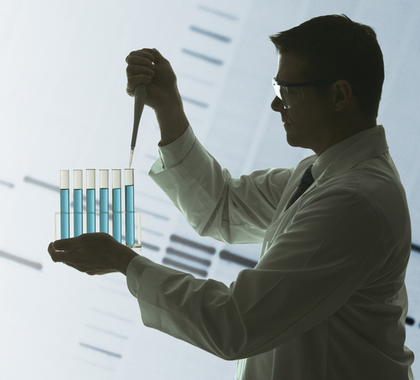The California Environmental Protection Agency (CalEPA) lavished high praise on DaimlerChrysler in a May 31 ceremony marking the company’s donation of three advanced-technology hydrogen-powered fuel cell vehicles to the state’s Air Resources Board.
The donation represents the latest step in DaimlerChrysler’s cooperation with California officials in their effort to jump-start hydrogen fuel cell technology.
Hydrogen Progress Cited
“DaimlerChrysler today literally delivered the keys to California’s future,” said Alan Lloyd, secretary of CalEPA, at the May 31 ceremony. “We are on the verge of an exciting transformation in California to a hydrogen economy.
A CalEPA news release identified the vehicles as F-cell vehicles that are part of a DaimlerChrysler fuel cell vehicle fleet in service around the world. “In this unique automobile, the entire fuel cell system is located in the vehicle’s floor, leaving full use of the passenger and cargo spaces,” explained the news release.
The F-cell vehicles have a range of 100 miles and can reach a top speed of 85 miles per hour. The car can accelerate from zero to 60 in 16 seconds.
“These cars demonstrate how accessible the future really is, and have provided us with an opportunity to reach out to the public,” Fred Aguiar, secretary of the California State and Consumer Services Agency, said at the ceremony.
Infrastructure Will Be Tested
“We have committed significant time, energy, and resources to creating an infrastructure that will support hydrogen-powered vehicles, promote their use, and lead us into the future,” added Energy Commission Chairman Joe Desmond. “Hydrogen is not only clean, it also promotes energy diversity.”
According to the CalEPA news release, “Through the DOE Controlled Hydrogen Fleet and Infrastructure Demonstration and Validation Project, DaimlerChrysler will place fuel cell vehicles in the hands of customers who will provide valuable feedback about performance in different conditions. DaimlerChrysler is testing over 100 fuel cell vehicles under varying weather, traffic conditions, and driving styles in different locations worldwide. This experience will benefit the development of the fuel cell automobile and how it will be refueled.
“The State will utilize the vehicles in different capacities in an effort to provide data to DaimlerChrysler,” the news release said. “These uses could include events, ride & drives, and high mileage accumulation uses, such as in the agency mail rooms.”
State Fuel Stations Proposed
The vehicle donation ceremony closely followed Gov. Arnold Schwarzenegger’s (R) May 23 unveiling of a California Hydrogen Highway Blueprint. According to the plan, California would spend $54 million to build a network of up to 100 hydrogen fueling stations within the next five years. Funding must be approved by the state legislature before the blueprint can take effect.
Most of the proposed hydrogen fueling stations will be built in the Los Angeles, San Diego, Sacramento, and San Francisco Bay areas. Thirty-nine stations already have been built or are being planned, leaving 61 new stations to be funded by the blueprint.
Under terms of the blueprint, the state will provide matching funds for the construction of fuel stations, which are expected to cost about $1 million each. The blueprint also proposes to reimburse automakers $10,000 for every hydrogen-powered vehicle sold in the state.
Hydrogen’s Future Remains Uncertain
Reaction to Schwarzenegger’s blueprint was mixed.
“My general response is two words: Wildly premature,” Joseph Romm, a former assistant U.S. energy secretary in the Clinton administration and author of The Hype About Hydrogen, told the May 23 San Jose Mercury News.
“What’s the rush?” added Romm. “These vehicles are so far from being ready for prime time that you may be building equipment that is obsolete.”
“I’m not naïve,” responded Lloyd in the Mercury News. “There are clearly issues that have to be addressed.”
Activists’ Reaction Crucial
Even so, Lloyd expressed confidence that fuel cell hurdles can be overcome in the near future.
“The Vision 2010 outlined in [Schwarzenegger’s] Hydrogen Highway Network Action Plan would ensure that, by 2010, every Californian would have access to hydrogen fuel along the state’s highways, with an increasing percentage of that hydrogen produced from clean, renewable resources,” Lloyd wrote in an article published on June 18 in the Sacramento Bee.
“California’s hydrogen highway would first develop refueling sites in urban areas away from major freeways to service growing populations of hydrogen-powered cars,” explained Lloyd in the Bee. “As more hydrogen vehicles were sold, sites would be developed on the state’s interstate and freeway systems. They would be approximately 25 miles apart and allow all owners of hydrogen-powered vehicles easy access to refueling facilities. Equipment at the sites would make and store hydrogen.”
“This donation shows that DaimlerChrysler takes a serious interest in our environment and cares about its corporate image,” said Sterling Burnett, senior fellow at the National Center for Policy Analysis.
Burnett continued, “The real questions, though, are is this technology going to be feasible in the real world and will the activist groups move the finish line once companies like DaimlerChrysler and General Motors begin to reach it? History shows us that the activist groups quickly forget the environmental innovations of automakers when searching for another issue to become indignant about.”
James M. Taylor ([email protected]) is managing editor of Environment & Climate News.



